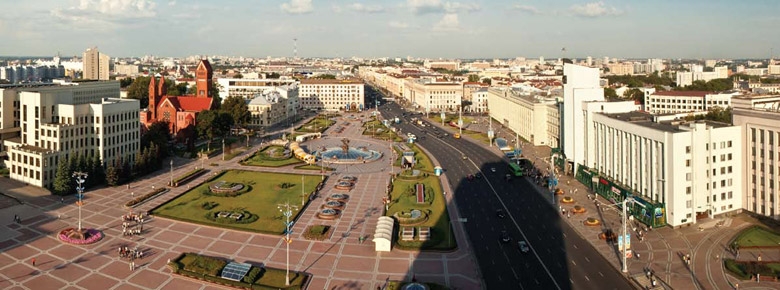- Belarus /
- Symbols
10 Symbols of Belarus

 |
Wisents at the Belovezhskaya Pushcha
Perhaps, the most known symbol of the country is the Belarusian wisent. A prehistoric animal, enlisted in the Red Data List of Belarus, the wisent inhabits Belarus only (with over 850 animals), alongside several dozens of animals found in the Polish part of the Belovezhskaya dense, a unique woodland, which can be itself announced another symbol of Belarus. Earlier, Polish kings and Soviet general secretaries had their residences there. |
 |
Hidden Treasures
For 200 years, over 1,000 treasures have been found on the territory of Belarus; with at least 2,000 estimated to be still hidden underground. The most legendary among missing treasures is 12 figures of apostles from the collection of the Radziwills noble clan. They are believed to have been made of silver and gold with precious stones, assembled of a man’s height. One more hidden treasure in Belarus is believed to keep the riches of Napoleon. It is known, that the French commander took two barrels with gold from Moscow and hid them somewhere in Belarus. |
 |
Stalin-times Empire Architecture
Of all the former-socialistic countries, Minsk can boast the most beautiful, unified and strongest architectural ensemble in the style of the Stalin Empire. Its significance was recognized by the UNESCO. Holistic architectural ensemble is situated on the major city’s street, on the Nezavissimosti (Independence) Avenue. |
 |
Heritage of the Radziwills
The Radziwills clan was one of |
 |
Augustow Canal
The navigable Augustow canal, between Belarus and Poland, counts about 200 years. Initially, this artificial river was aimed to become a transit corridor from Poland to Lithuania round Prussia, which set high customs fees for goods, transported from the Russian Empire. The canal had been constructed for about 15 years, at a price of 14 million Polish zlotys. There are only two artificial water system of this kind in the world, the Gota canal in Sweden and the Kaledonski canal in Britain. |
 |
Miraculous Zhyrovichy MonasteryDozen buses with tourists and pilgrims from Belarus and abroad come to Zhirovichy village, close to the town of Slonim. They want to see a splendid baroque architecture of the local monastery and get to know, how monks live and work there. Many people come to the monastery, expecting miracles. Monastery’s relic is a kid’s palm size icon of Virgin Mary. It is believed to help the suffering people to get rid of illnesses and misfortune. |
 |
Kupala Day
Kupala Day is a former-pagan holiday, which gained its place in the Christian culture at first and then became recognized as a bright secular feast of modern days. It is known all over Europe and is a very popular in Belarus. Alongside going to the church, people usually pay tribute to ancient gods, according to traditions, by burning fire and putting men of straw to it. Besides, people bathe in rivers and lakes at dawn, gather herbs and search for the legendary blooming flower of miraculous fern, which is believed to bring happiness. |
 |
Slutsk SashesIn 17th century, unusual sashes with gold and silver fibers were made for the local nobility in the Belarusian town of Slutsk. Over 200 grams of gold and 60 grams of silver were taken to assemble one sash. These belts possessed a «F.S.» label, what meant «Made in Slutsk». At that time, Slutsk sash was a symbol of power and wealth of its owner. Now, sashes have become a symbol of the Belarusian history and nation; the price of one old sash from Slutsk may be set up to US$300,000. |
 |
Artists from BelarusMarc Chagall, the initiator of modernism in arts, stays one of the most famous artists from Belarus. He painted the new ceiling for the Paris Opera, created a series of stained-glass windows and mosaics for the Catholic church in Metz, and in 1964, he created a mosaic for the UN Headquarters in New York. At the beginning of the 20th century, another Belarusian artist Chaim Soutine made a major contribution to the expressionist movement while living in Paris. |
 |
Symbol of the CapitalTrinity Hill (or Troitskoye Predmestie) is the historic neighbourhood that sprawls along the left bank of the Svisloch River in the centre of Minsk. It’s an outdoor museum, which combines styles and patterns of the urban stone architecture of the 19th century. Thus, the house of Pinsukhovich once was leased to accommodate the companies of the Serpukhov regiment. The Museum of Nature today occupies the former Kitayevskaya synagogue, which was built in 1874. Walking in its courtyards, you appear in the atmosphere of the first part of the 19th century. |


